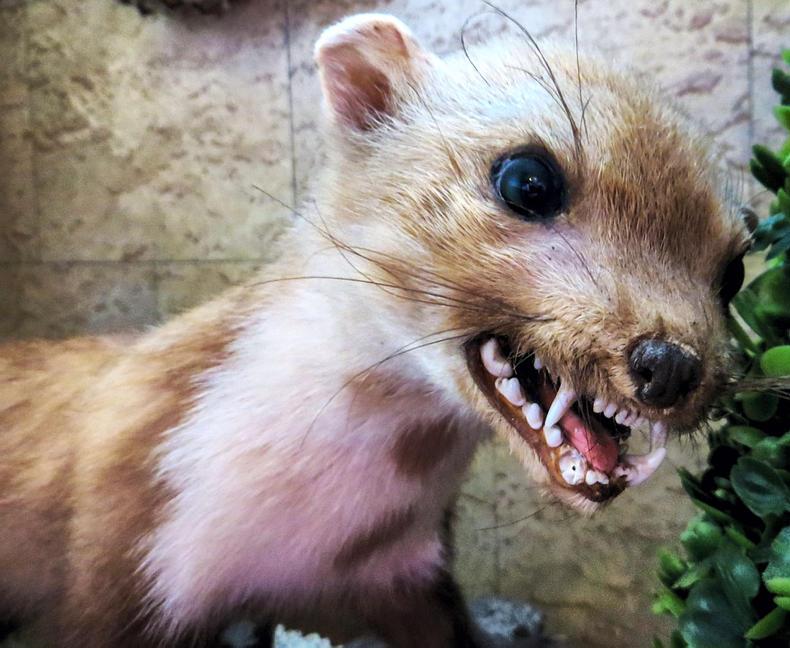Rabies is a viral disease that affects all mammals, including humans. A bite from a rabid animal causes severe nervous system disease. It is a fatal condition, with deaths occurring once clinical signs develop. The disease can affect all farm animals including large livestock and dogs.
As previously published by Irish Farmers’ Journal, the Department of Agriculture (DAFM) said it has evidence of exposure to lyssavirus in a sable (a species of marten), which had been imported into Ireland as a pet. The Lyssavirus includes the rabies virus traditionally associated with that disease.
Causes of rabies in cattle
The most common way for cattle to become infected with the virus is to receive a bite from a rabid dog or wild animal such as a fox, badger or bat. Transmission is mainly carried through saliva, which then spreads through the bloodstream via the spinal chord and on to the brain, where the clinical signs may then been seen in cattle. However, any transfer of saliva from one cow to another could spread the disease.There can be an incubation period of three to 12 weeks before cattle show clinical signs.
Spot the signs
Milk production and feed intake may drop gradually before rapidly falling and cows may not look very alert, staring at objects.Lack of appetite.Difficulties swallowing.Altered vocalisation.Seizures.Incoordination of hindquarters - unsteady gait.Final stages of clinical signs
Weak muscles, especially legs and tail. Difficulty swallowing. Drooping eyelids. Saliva frothing at the mouth. General paralysis, then convulsions and coma before death within 3-8 days of first signs.If rabies is suspected in an animal in Ireland
The affected animal must be euthanased to reduce the risk of further spread and for rabies testing. All in-contact humans must be traced and assessed by health services. All in-contact animals must be traced and assessed by a veterinary inspector of the DAFM.Animals considered of high risk of exposure (e.g. bitten by suspect animal) must be placed in isolation immediately.DAFM advice if you are bitten by a rabid animal.
Thoroughly wash the wound with soap and running water for 15 minutes. Seek immediate medical advice. If you suspect the dog has rabies, it has a history of recent travel or import, or its history is unknown:
- Isolate the animal if it is safe to do so (or note what the animal looks like).
- Contact your local dog warden or An Garda Síochána.
Read more
Rabies alert issued by Department of Agriculture
Poots taking science led approach
Spotlight on Irish MEPs in TB vote
Rabies is a viral disease that affects all mammals, including humans. A bite from a rabid animal causes severe nervous system disease. It is a fatal condition, with deaths occurring once clinical signs develop. The disease can affect all farm animals including large livestock and dogs.
As previously published by Irish Farmers’ Journal, the Department of Agriculture (DAFM) said it has evidence of exposure to lyssavirus in a sable (a species of marten), which had been imported into Ireland as a pet. The Lyssavirus includes the rabies virus traditionally associated with that disease.
Causes of rabies in cattle
The most common way for cattle to become infected with the virus is to receive a bite from a rabid dog or wild animal such as a fox, badger or bat. Transmission is mainly carried through saliva, which then spreads through the bloodstream via the spinal chord and on to the brain, where the clinical signs may then been seen in cattle. However, any transfer of saliva from one cow to another could spread the disease.There can be an incubation period of three to 12 weeks before cattle show clinical signs.
Spot the signs
Milk production and feed intake may drop gradually before rapidly falling and cows may not look very alert, staring at objects.Lack of appetite.Difficulties swallowing.Altered vocalisation.Seizures.Incoordination of hindquarters - unsteady gait.Final stages of clinical signs
Weak muscles, especially legs and tail. Difficulty swallowing. Drooping eyelids. Saliva frothing at the mouth. General paralysis, then convulsions and coma before death within 3-8 days of first signs.If rabies is suspected in an animal in Ireland
The affected animal must be euthanased to reduce the risk of further spread and for rabies testing. All in-contact humans must be traced and assessed by health services. All in-contact animals must be traced and assessed by a veterinary inspector of the DAFM.Animals considered of high risk of exposure (e.g. bitten by suspect animal) must be placed in isolation immediately.DAFM advice if you are bitten by a rabid animal.
Thoroughly wash the wound with soap and running water for 15 minutes. Seek immediate medical advice. If you suspect the dog has rabies, it has a history of recent travel or import, or its history is unknown:
- Isolate the animal if it is safe to do so (or note what the animal looks like).
- Contact your local dog warden or An Garda Síochána.
Read more
Rabies alert issued by Department of Agriculture
Poots taking science led approach
Spotlight on Irish MEPs in TB vote






 This is a subscriber-only article
This is a subscriber-only article










SHARING OPTIONS: